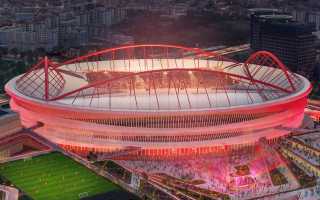Emirates Stadium (Ashburton Grove)
| Capacity | 60 704 |
|---|---|
| Country | England |
| City | London |
| Clubs | Arsenal FC |
| Inauguration | 22.07.2006 (Arsenal London – Ajax Amsterdam) |
| Construction | 2004 – 07.2006 |
| Cost | 390 mln £ |
| Design | Populous |
| Contractor | Sir Robert McAlpine |
| Address | Holloway, Islington, London, N5 1BU |
Advertisement
Emirates Stadium – stadium description
How did idea to build Emirates Stadium come about?
In the 1990s, Arsenal had to deal with the issue of reduced capacity at Highbury, a consequence of the stadium’s redevelopment in line with the recommendations of the Taylor Report. These changes, introduced after the Heysel and Hillsborough tragedies, involved eliminating standing areas and replacing them with seating. The club considered relocating to Wembley, but the proposal faced opposition from the FA, ultimately leading to the withdrawal of the bid in 1998.
However, Arsenal was granted permission to play their Champions League matches at Wembley between 1998 and 2000, which resulted in record attendance figures and increased revenue. This experience—contrasting with the poor attendance and high ticket prices at Highbury, as well as difficulties faced during previous redevelopment attempts—confirmed the need for a new, larger stadium.
What did Emirates Stadium project involve?
In November 1999, Arsenal began exploring the possibility of building a new stadium in Ashburton Grove. Real estate agent and club advisor Anthony Spencer identified the location after searching across North London for suitable land. The area, located just 450 meters from Highbury, included a waste processing plant and industrial grounds.
In November 2000, Arsenal submitted a planning application to build a new 60,000-seat stadium. The proposal also included the redevelopment of Drayton Park, the conversion of Highbury into a residential complex, and the construction of a new waste processing facility on Lough Road. The club planned to create 1,800 new jobs and 2,300 housing units, as well as to upgrade three nearby railway stations—Holloway Road, Drayton Park, and Finsbury Park—to improve transport access for fans on matchdays.
Not everyone supported the project. In January 2000, a coalition of 16 resident and business groups formed under the name Islington Stadium Communities Alliance (ISCA) to oppose the development. Concerns were raised about air pollution and increased traffic. A public survey conducted seven months after the application was submitted showed that 75% of residents were against the investment. However, by October 2001, club-conducted research indicated that 70% of respondents supported the project, which also received backing from then-Mayor of London, Ken Livingstone.
To win over the community, Arsenal launched a promotional campaign, featuring the slogan Let Arsenal Support Islington
on billboards and as a backdrop during manager Arsène Wenger’s press conferences. On December 10, 2001, Islington Council approved the stadium project and the relocation of the waste facility to Lough Road. A month later, the plan was approved by the Mayor of London, with the final decision resting with the Secretary of State for Transport. After reviewing the results of a public inquiry, he chose not to intervene, allowing Islington Council to issue the building permit in May 2002.
Despite the approvals, local residents and ISCA attempted to block the development by filing a lawsuit with the High Court. In July 2002, Justice Duncan Ouseley dismissed the case, enabling Arsenal to begin construction. In January 2005, the club won another legal battle against small businesses when the High Court upheld Deputy Prime Minister John Prescott’s decision to issue a compulsory purchase order for the project.
How was Emirates Stadium financed?
Securing the funding for the construction of the stadium posed a significant challenge, as Arsenal did not receive any public grants. Arsène Wenger often emphasized that French clubs typically don't pay for their stadiums, and Bayern Munich had acquired the land for the Allianz Arena for a symbolic €1. In contrast, Arsenal had to finance the purchase of land in one of the most expensive parts of London.
In search of additional revenue sources, the club capitalized on income from player transfers. The sales of Nicolas Anelka to Real Madrid, and Marc Overmars and Emmanuel Petit to Barcelona, brought in over £50 million, which partly covered the cost of the new training centre in London Colney, opened in October 1999.
In 2000, Arsenal sold a 5% stake to Granada Media Group for £47 million. In return, the company acquired rights related to media, advertising, and club merchandise. The money was intended to support the stadium’s construction, but after the collapse of Granada’s subsidiary, ITV Digital, in 2002, the company was required to return £30 million.
In the summer of 2002, Arsenal recorded a loss of £22.3 million and turned to Rothschild Bank for a financial assessment. Soon after, the club secured a £260 million loan from a consortium led by the Royal Bank of Scotland. Despite this, project costs continued to rise—by 2003, they were estimated at £500 million, prompting the club to temporarily halt construction.
To raise additional funds, the club offered supporters bonds worth up to £5,000, signed a new seven-year sponsorship deal with Nike worth £55 million, and, in 2004, finalized the most crucial agreement—Emirates paid £100 million for stadium naming rights and shirt sponsorship. The deal has since been extended several times, most recently in 2023, securing support through 2028.
What is Arsenal’s stadium called—Emirates Stadium?
Although the official name of the venue is Emirates Stadium, many fans still refer to it as Ashburton Grove or simply The Grove, especially those who oppose corporate stadium naming. Due to UEFA sponsorship regulations, the name Emirates Stadium is not used during European matches—in those instances, the venue is referred to as Arsenal Stadium, just as Highbury was in the past.
How did the construction and opening of Emirates Stadium unfold?
Construction of the stadium began after funding had been secured. In January 2002, Arsenal selected construction firm Sir Robert McAlpine, and the architectural design was entrusted to Populous. Other companies involved included Arcadis (construction consultants) and Buro Happold (structural engineering).
The first phase of demolishing the old infrastructure was completed in March 2004, and by May of that year, foundation piling for the west, east, and north stands was finished. In August 2004, two bridges were built over the Northern City Line railway, linking the stadium to Drayton Park.
In August 2005, the stadium’s topping-out ceremony was held, marking the completion of the main structure. By December of that year, the facade, power systems, and water tanks were installed. On March 13, 2006, Arsenal midfielder Abou Diaby installed the first seat in the new stadium. The pitch was laid by DD GrassMaster, with the design and installation overseen by Hewitt Sportsturf. On June 25, 2006, the floodlights were tested for the first time, and the goals were set up the following day.
To obtain the required operating licenses, Arsenal organized three test events. On July 18, 2006, a shareholders’ open day was held. Two days later, 20,000 club members attended an open training session. The final test event was Dennis Bergkamp’s testimonial match against Ajax on July 22, 2006.
The stadium was officially opened on October 26, 2006, by Prince Philip, Duke of Edinburgh. Queen Elizabeth II was originally scheduled to lead the ceremony but was unable to attend due to health issues. During the event, Prince Philip joked, Well, you may not have my wife, but you’ve got the second most experienced plaque unveiler in the world.
In a nod to royal tradition—after all, the Prince of Wales (later King Edward VIII) had opened Highbury’s west stand in 1932—Queen Elizabeth II invited Arsenal’s chairman, manager, and players to afternoon tea at Buckingham Palace. The meeting, which took place on February 15, 2007, was the first such event in history involving a football club.
How did Arsenal repay debts for Emirates Stadium?
When Arsenal was building Emirates Stadium, the club had to borrow a huge sum—£260 million. To avoid paying excessive interest, Arsenal quickly organized new, more favorable repayment terms. In 2006, Arsenal became the first football club in Europe to issue special bonds—debt securities—to raise funds and pay off part of its earlier loans. As a result, the club’s annual debt servicing costs dropped to around £20 million, which allowed for better long-term budget planning.
At the same time, Arsenal was developing a residential project on the site of the old Highbury stadium, which started generating profits after several years. This revenue also helped reduce the debt related to the new stadium’s construction.
Following the move to Emirates, the club adopted a policy of financial self-sufficiency—rather than spending heavily on transfers, Arsenal focused on frugal financial management. The banks that had issued the loans required the club to maintain high matchday attendance and to qualify for the Champions League in at least three out of the next five seasons.
To improve the club’s financial position, Arsenal also sold key players and raised ticket prices—decisions that proved unpopular with many fans. Manager Arsène Wenger admitted that this period was the most difficult of his career—he had very limited funds to strengthen the squad, yet he was under immense pressure to ensure the club met its financial obligations. The banks viewed Wenger as a symbol of stability, and his continued presence at the club was a key condition for securing the loans.
What was “Arsenalisation” of Emirates Stadium, and what did it involve?
In August 2009, Arsenal launched the process of Arsenalisation
of Emirates Stadium—a project aimed at transforming the venue into a space that more deeply reflected the identity and heritage of the club. The initiative, started following consultations with fans, was overseen by chief executive Ivan Gazidis. The goal was to embed Arsenal’s spirit into every corner of the stadium.
The first stage of the makeover involved installing white seats on the lower tiers, arranged to form the shape of the club’s iconic cannon. Outside the stadium’s southern end, a large mural called The Spirit of Highbury was erected to honor every player who had represented the club during its 93 years at the old ground. In addition, eight massive murals were placed on the stadium’s exterior, depicting 32 club legends standing shoulder to shoulder. Among the stars featured were Patrick Vieira, Thierry Henry, Robert Pires, and Ian Wright.
In the lower concourses of the stadium, twelve monumental artworks were installed, illustrating the most important moments in Arsenal’s history—selected by fans through an online vote. Ahead of the 2010/11 season, the stadium’s sections were renamed to reflect traditional designations from Highbury, reintroducing names such as North Bank and Clock End. Above the Clock End, a new version of the iconic clock was installed and ceremonially unveiled before the match against Blackpool.
In April 2011, two bridges near the stadium were named in honor of influential Arsenal figures—Ken Friar and Danny Fiszman.
To mark the club’s 125th anniversary in December 2011, three statues were unveiled outside the stadium—Tony Adams, who captained Arsenal for over a decade; Thierry Henry, the club’s all-time top scorer; and Herbert Chapman, the legendary manager who revolutionized Arsenal in the 1930s. Another club icon, Dennis Bergkamp, received his own statue in February 2014, placed outside the west stand.
The stadium atmosphere was further enriched by fan involvement in matchday displays. Banners and flags, often designed by the supporter group REDaction, became an integral part of Emirates Stadium environment. One of the most recognizable elements is a giant flag bearing the number 49
—symbolizing Arsenal’s legendary 49-game unbeaten run in the Premier League during the 2003/04 season under Arsène Wenger. On matchdays, the flag is passed from fan to fan as part of the tradition.
What does Emirates Stadium, Arsenal’s home ground, look like?
Often described as beautiful
and intimidating,
Emirates Stadium is a four-tier arena with stands that rise gradually around the pitch. It features a translucent polycarbonate roof that covers only the seating areas. The underside of the structure is finished with metallic panels. The roof is supported by four massive triangular steel trusses, each resting on sturdy vertical concrete cores. Eight of these cores are further connected by distinctive steel tripods.
Inside each core are four access points to the stands, elevators, and technical rooms.
From the outside, the stadium appears light and open—thanks to the glasswork and gaps between the structural cores, you can catch glimpses of the interior. The architects from Populous ensured the stadium gleams in the sunlight and glows after dark.
The upper and lower tiers are fitted with standard seating. Two underground levels house back-of-house facilities, including kitchens, locker rooms, a press center, and an education center. The main level—known as the Club Level—offers premium seating and the Directors’ Lounge. It contains 7,139 seats, available on licenses lasting from one to four years. Directly above is a ring of 150 private boxes accommodating 10 to 15 guests each, totaling 2,222 seats. Thanks to high demand and the affluence of London fans, revenue from these areas nearly equals the matchday income of the former Highbury ground.
The upper tier is shaped to leave open corners between the stands, while the roof slopes inward—both design choices intended to improve natural lighting and air circulation. Interestingly, fans sitting in the upper tier on one side of the stadium cannot see supporters on the opposite side.
Emirates was the first stadium in the world to offer HDTV live streaming, through a deal with Sony. Two large video screens were installed in the northwest and southeast corners.
Just like at Highbury, the pitch is oriented north to south, and the players’ tunnel and team benches are located on the west side, beneath the main camera gantry. The pitch itself—considered one of the best in the world—is nicknamed The Carpet
by players and fans alike, a reputation confirmed by international turf organizations.
The away fans’ section is located in the southeast corner of the lower tier. If needed, it can be expanded—first to 4,500 seats in the lower tier, then by another 4,500 in the upper tier, allowing up to 9,000 visiting fans, which matches the 15% limit permitted in cup competitions.
The current capacity of the stadium is 60,704, with the possibility of future expansion—pending approval from local authorities such as Islington Council.
The stadium is also fully accessible for people with disabilities. It includes a dedicated matchday lounge, Changing Places toilets with a hoist and changing table, and space for guide dogs. In September 2017, a sensory room was opened. Emirates offers 241 wheelchair-accessible spaces.
The modern stadium pays tribute to tradition—the club’s main office is called Highbury House, and at the entrance to the Diamond Club stand busts of Herbert Chapman, Claude Ferrier, Denis Hill-Wood, and Arsène Wenger—all relocated from the old stadium. The famous Clock End timepiece also made the move, now displayed alongside a larger replica. The Arsenal museum, formerly housed in the North Bank stand, is now located in the Northern Triangle building just north of the stadium. Inside, visitors can see marble statues from the old Marble Halls at Highbury.
Were there any plans to redevelop Emirates Stadium?
In 2008, the waiting list for Arsenal season tickets had grown to as many as 40,000 people. The club also explored the idea of introducing a safe standing system.
In February 2022, a comprehensive renovation plan for Emirates Stadium was announced. The first phase involved installing new video screens, upgrading the entrance turnstile system, and renovating the roof and external structure—including replacing Arsenal crests mounted on the façade. Later phases were expected to include an improved sound system and better mobile connectivity throughout the venue.
What sporting events have taken place at Emirates Stadium?
Emirates Stadium is not only the home of Arsenal—it has also hosted major sporting events beyond the Premier League. Over the years, it has welcomed many international football friendlies, most of them involving Brazil. The Canarinho
have played here against teams such as Argentina, Portugal, Italy, and Uruguay.
But it’s not just football—Emirates also became a rugby venue in November 2022, hosting the Rugby League World Cup semi-final. In a thrilling match, England lost to Samoa after extra time, with over 40,000 fans in attendance.
What non-sporting events have taken place at Emirates Stadium?
Beyond its sporting role, Emirates Stadium also functions as a modern conference center. On March 27, 2008, it hosted a summit attended by UK Prime Minister Gordon Brown and French President Nicolas Sarkozy. The venue was chosen as a symbol of successful British-French cooperation.
The stadium has also served as a filming location for popular TV shows like The X Factor, Britain’s Got Talent, Big Brother, and Celebrity MasterChef—in the 2016 edition of the latter, contestants prepared meals for Arsenal staff.
Emirates is also used as a concert venue, with its capacity increased to 72,000 for such events. The first band to perform there was Bruce Springsteen & The E Street Band, who played two shows on May 30 and 31, 2008. In June 2012, Coldplay held three concerts—two of which sold out in just 30 minutes, making it the first full stadium sell-out for a music event. The attendance record, however, belongs to Green Day, who performed in June 2013. In 2022, The Killers played two sold-out shows as part of their Imploding the Mirage tour.
How Emirates Stadium compares to other Premier League venues?
Advertisement
Pictures

10.04.2007 © Peter McDermott (cc: by-sa) 
15.03.2014 © Dave Frost 
22.08.2009 © Ed g2s (cc: by-sa) 
29.08.2009 © Ed g2s (cc: by-sa) 
01.06.2013 © Ed g2s (cc: by-sa) 
01.03.2014 © Paul Hudson (cc: by) 
15.08.2015 © Andrew Dupont (cc: by-sa) 
05.07.2014 © David Wilson 
15.08.2014 © jpellgen (cc: by-nc-nd) 
2016 © Michalina Kostecka 
27.04.2015 © Sam Codrington 
03.06.2013 © Alex Pietzsch 
28.10.2011 © David Holt (cc: by-sa) 
02.02.2014 © Kieran Clarke (cc: by) 
09.04.2015 © Hugh Rawson 
06.04.2014 © Dave Pearce (cc: by-nc-nd) 
06.04.2014 © Dave Pearce (cc: by-nc-nd) 
18.12.2014 © Kevin Hackert (cc: by-nc) 
07.05.2013 © David Kakiuthi (cc: by-nc-nd) 
18.08.2012 © Ronnie McDonald (cc: by) 
11.09.2011 © Ronnie McDonald (cc: by) 
19.10.2012 © Kieran Clarke (cc: by) 
08.03.2014 © Kieran Clarke (cc: by) 
01.09.2013 © Tim Snell (cc: by-nd) 
16.08.2014 © jpellgen (cc: by-nc-nd) 
07.08.2014 © Pete Dobson 
21.01.2010 © Jesús Gorriti (cc: by-sa) 
23.01.2015 © Andy Hui 
28.07.2015 © Kristofer Moffett 
03.08.2014 © DSanchez17 (cc: by-nc) 
29.03.2015 © Felipe Gálvez 
29.03.2015 © Felipe Gálvez
Related news
2026
2025
-
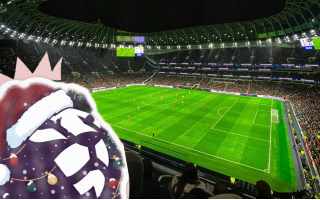
England: Premier League at the turn of the year. 7 must-see fixtures
December in the Premier League is when everything accelerates: packed stadiums, festive energy and matches that can reshape the title race. This article highlights the key fixtures you should consider attending — and shows how to secure tickets before availability disappears.
-
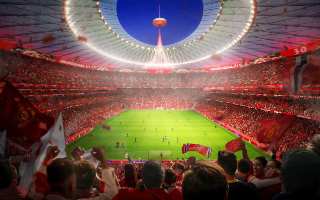
Great Britain: 2035 Women’s World Cup stadiums. New Trafford confirmed
Great Britain could host the 2035 FIFA Women’s World Cup, and today the list of stadiums that could welcome the world’s best players was revealed. England, Scotland, Wales and Northern Ireland have submitted a joint bid – the only one FIFA has received – which puts the project firmly in pole position.
-
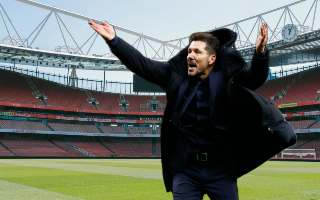
Champions League: Atlético “reports” Arsenal... for lack of hot water at Emirates
Atletico Madrid "reported" Arsenal to UEFA authorities for the lack of hot water at Emirates Stadium, which caused Colchoneros players to leave the stadium sweaty and wash at the hotel. The Gunners decided to apologize to their guests for the incident.
-

England: Arsenal planning Emirates expansion and temporary switch to Wembley
Arsenal are considering several proposals for a major redevelopment of the Emirates Stadium — a project worth up to £500 million that could restore its status as the largest football venue in London, overtaking both West Ham United and local rivals Tottenham Hotspur.
-
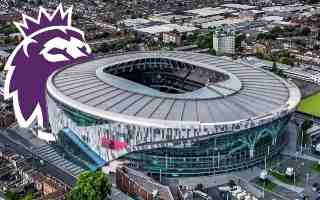
England: How the 21st century shaped the Premier League with 8 new stadiums
Although the Premier League is mainly associated with historic stadiums with over a century of tradition, the 21st century has also brought several modern venues. In this article, we will go through all the stadiums that have been built in the last 25 years.
-
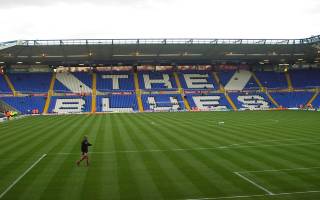
England: Birmingham City – ambitious plan to return to the top flight and a new stadium
Birmingham City has a clear goal – return to the Premier League and build solid financial foundations. Since the American investment group Knighthead took over, promotion to the English top flight has become the primary target, with a longer-term vision of creating a stadium worthy of the biggest clubs.
-
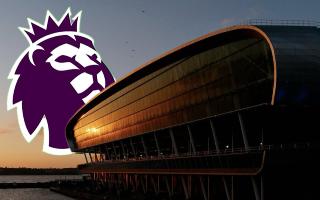
England: Premier League's 50,000+ seat stadiums after Everton's new ground opens
The Premier League is home to some of football’s biggest stages, where fans create unforgettable atmospheres. Everton’s new stadium joins the ranks of venues with 50,000+ seats. Discover the full list of English football giants.
-
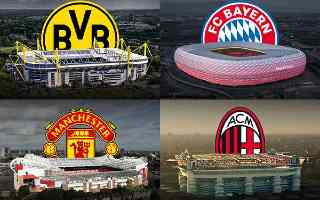
UEFA: 2. Bundesliga ahead of Arsenal and Atletico! Surprising attendance figures in Europe
Who attracts the biggest crowds to their stands, and who unexpectedly falls short of the numbers needed to make the top ranks? The latest attendance report for European leagues in the 2023/24 season provides the answers.
-
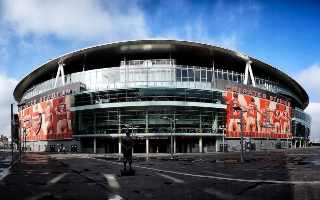
England: Arsenal's high revenues may affect redevelopment of Emirates Stadium
Arsenal to record revenue growth between 2023 and 2024 Experts say this result could have long-term implications for transfers, ticketing policy and plans to expand Emirates Stadium.
2024
-
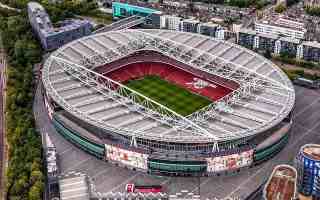
England: Emirates Stadium expansion will be costly and complicated
Arsenal's plans to expand the Emirates Stadium to 80,000 seats will require "another small stadium on top" and costs running into "hundreds of millions."
-

England: Arsenal’s 500th match at Emirates Stadium – 18 years of history
The match against Manchester United on December 3 at Emirates Stadium was particularly special for the entire Arsenal community. It marked the 500th match played at the venue, which has been called home since 2006.
-
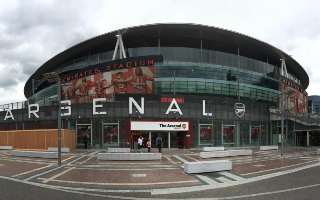
England: Emirates Stadium - future biggest Premier League venue?
According to reports from English media, Arsenal is exploring the possibility of increasing the capacity of Emirates Stadium to 80,000 seats. The Gunners' home ground opened in 2006 after the team left Highbury and currently holds 60,704 spectators.
-
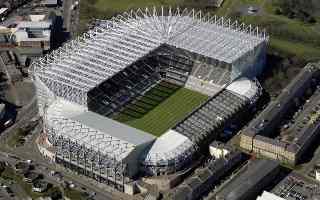
England: Will government introduce new rules on stadium sales?
The government is preparing to grant powers to an independent regulator that will prevent Premier League clubs from selling their stadiums to affiliated companies or third parties.
-

England: Emirates Stadium set for renovation?
Arsenal is considering options for renovating Emirates Stadium to take advantage of the high demand for tickets, which would allow them to match matchday revenues with other Premier League clubs. The stadium, which holds 60,000 fans, has been their home since leaving the iconic Highbury in 2006.
-
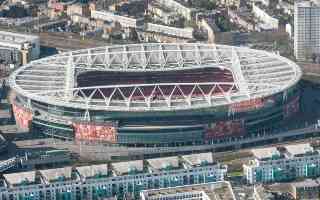
England: Emirates Stadium to undergo major renovation?
Josh Kroenke, a board member of Arsenal, revealed that the club has had “internal discussions” about renovating Emirates Stadium. This stadium, home to Arsenal since 2006, has undergone several modernizations over the years, but now it’s time for a more significant investment.
-

England: Attendance at Premier League stadiums in the 2023/24 season
Another season, another league title for Manchester City. The award for highest attendance also went to the city of Manchester as well, but to the Red Devils, despite the team's worst season in Premier League history. As many as six clubs surpassed one million spectators this season, with five stadiums filling up at an average of more than 99%. Amazing.
-

England: Etihad and Emirates will be prepared for potential title celebrations
Both Manchester City and Arsenal could clinch the English Premier League title on Sunday, during the final round of Premier League matches. Pep Guardiola's side holds a two-point advantage over the Gunners. All matches of the final round will kick off simultaneously. So what about the trophy?
-

England: Arsenal's women's team moves to Emirates
The tiny home of Arsenal's women's team will be replaced permanently next season by the fifth largest stadium in England. And that doesn't necessarily portend emptiness in the stands. The Gunners have already attracted a crowd this season by selling out all their tickets twice.
-

Europe: Which stadiums generate the most revenue in Europe?
A UEFA report published some time ago analyses the state of football clubs in Europe and their financial performance in 2022 and 2023. It did not lack stadium statistics. How did European arenas perform?

 StadiumDB
StadiumDB